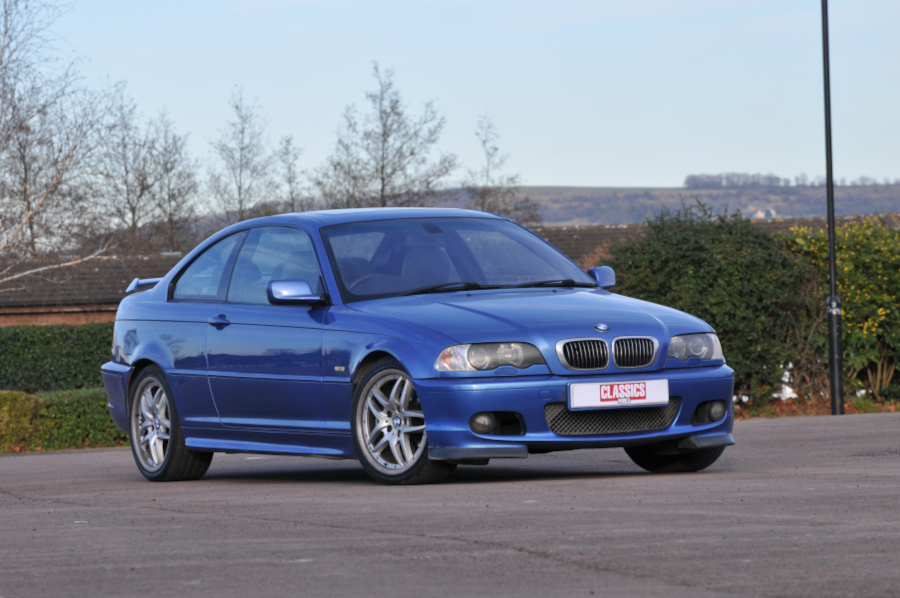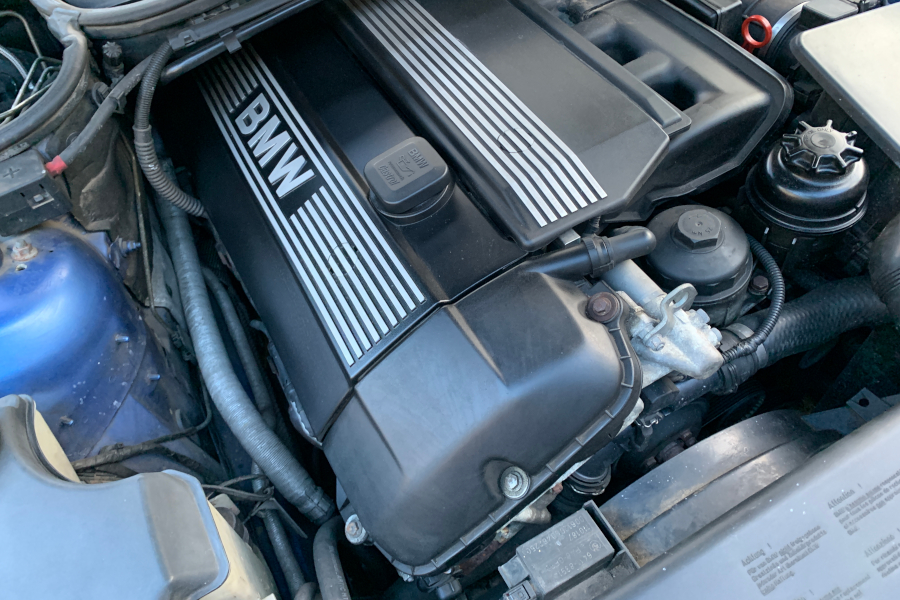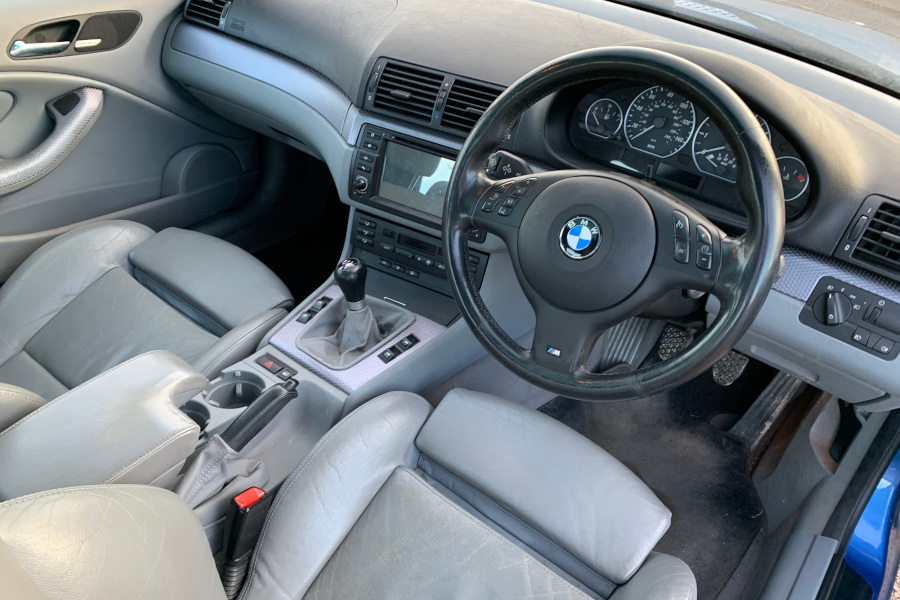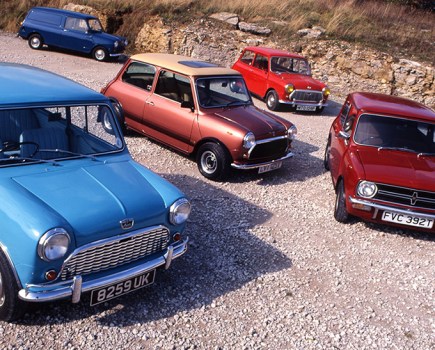Regarded by many BMW fans as the pinnacle of the 3 Series, the E46 generation still makes for a very usable modern classic. Here’s what you need to know
Words and images: Paul Wager
Drive a well-preserved example of the fourth-generation 3-Series (‘E46’ in BMW speak) and you might be surprised to discover it was actually launched back in 1998, so modern are the basic elements of the driving experience. Sure, newer models may have more tech and gadgetry but in the fundamentals of handling, performance and driving feel the game really hasn’t moved on in any meaningful way.
Following BMW’s philosophy of evolution followed by revolution, the E46 was essentially an extensive overhaul of the previous ‘E36’ generation, itself a state-of-the-art production which left the competition scrabbling to catch up. At the UK launch in 1998, the range was limited to the four-door saloon, available as with four-cylinder power as the 1.9-litre 318i rated at 117bhp, plus six-cylinder engines in the 148bhp 2-litre 320i, the 169bhp 2.5-litre 323i and the 190bhp 328i. The sole diesel in the range was the 134bhp four-cylinder 320d.
Shortly after launch, the 316i was added at the bottom of the range, a detuned version of the 318i engine offering 103bhp while a new market niche was created with the 3-litre straight six diesel powerplant in the 181bhp 330d.
In late 2000 the petrol engines were rejigged, the 323i replaced by a new 189bhp 325i and the 328i eclipsed by the 231bhp of the 330i. For 2001, the four-cylinder petrol units were revised with the new Valvetronic technology, the 316i now rated at 115bhp and the 318i at 141bhp. Meanwhile, a new (2-litre) 114bhp 318d was added to the range, the 320d gained common rail injection to bump output to 150bhp and the 320i was stretched to 2.2 litres and 170bhp.
For 2003 the engine range was revised again, the 318i uprated to 150bhp and the 330d boosted to 201bhp.
The two-door coupe arrived in late 1998 and the Touring estate in early 1999, followed by the convertible in late 1999 and the Compact from mid 2000. The saloon and estate were facelifted in 2001 with revised headlights, reshaped bumper, wings and grille and revised rear lights, while the coupe and convertible were facelifted in 2003 with similarly revised lights, grille, bonnet and front bumper.
In May 2005 the saloon and estate were replaced by the new ‘E90’ model (technically the saloon was E90, the Touring E91), with the E46 coupe and convertible produced until May 2006. The Compact was discontinued at the end of 2004, effectively replaced by the 1 Series.
Bodywork
The earliest E46s may be 26 years old now, but these are very much cars of the modern era and pretty good at withstanding the rot. Weak points are generally the front wings, especially on the coupe/convertible where the wheelarch lips will tend to rust from the inside and we’re also starting to see tatty arches on the more neglected saloons and Tourings. Luckily, the wings are bolt-on although pattern parts often require some fiddling to fit neatly.
Rear wings can also start to bubble around the lips and above the bumper if owners haven’t hosed out the dirt regularly, but otherwise they tend to hold together well and a terminally rotten example is still unusual. Underneath, rotten sills aren’t unknown but the plastic covers mean a repair will at least be hidden.
On the Touring, erratic behaviour from the tailgate locks, glass hatch or rear wiper can generally be traced to damaged wiring where it passes through the hinge area. It’s been a BMW problem for years but it’s straightforward if fiddly to strip back the conduit and find the break.
Sluggish windows can often be eased by lubricating the channels with silicone or similar, but on the coupe the door seals can tend to come adrift. They’re costly to buy new from BMW so used parts are the best bet but care needs to be taken when glueing them into place.
Engine
The early four-cylinders are a known quantity and really very reliable if they’re maintained properly, with major problems being obvious. Niggles like cam/crank sensors and the plastic idle valve can cause poor running, while the oil filter housing can leak from the gasket. Otherwise, problems are likely to be age related.
The petrol sixes are similarly straightforward but do need care to keep them running reliably. The electronic thermostat is a common failure, usually obvious from the heater not blowing hot and the gauge never reaching the centre mark, while the underbonnet heater valve can also fail – usually with the rubber diaphragm collapsing and blocking the valve, meaning no heat and a cooling system which is impossible to bleed properly. Both are easy DIY fixes though.
A frequent oil smell through the vents and noticeable from outside is generally down to a seeping engine top cover gasket which allows a small amount of oil to dribble down to the hot exhaust manifold. A new genuine BMW gasket will usually solve the problem and again it’s straightforward DIY in theory but the cover itself and the old gasket can be hard work to remove.
The six-cylinder engines do tend to use a bit of oil, the 2.2-litre 320i being the worst culprit, so it pays to keep an eye on the dipstick. Blocked crankcase ventilation systems don’t help and it’s worth replacing the oil separator valve and cleaning out or replacing the plastic pipes.
The petrol engines are also notorious for failed coil packs, which will trigger the engine warning light. They’re simple to replace and a basic OBD code reader is a useful tool to identify which one is at fault.
The M47 diesel in the early 320d is generally a reliable engine but the later common rail diesels are more highly stressed and can suffer problems with airflow meters, injectors and fuel pumps as well as worn turbochargers – which are at least obvious. The steel injectors have a habit of welding themselves to the aluminium head and are best left to a specialist familiar with the job.
Your biggest issue with the diesels is generally knowing whether they’re still standard or not, as so many have been remapped for improved power. Drive a few to get an idea of what they should feel like and if it smokes heavily then be suspicious.
The common rail diesels also suffered from the infamous ‘swirl flap’ issue where the plastic flaps in the inlet manifold designed to promote swirl could get sucked into the engine. The plastic parts won’t cause damage but their metal fixings will and kits were produced to simply remove them and blank the apertures off, with no discernible effects.
Transmission
The manual boxes and the Steptronic auto are robust units, although it goes without saying that higher-mileage automatics will benefit from ignoring BMW’s ‘sealed for life’ business and getting the fluid changed. The five-speed manual can suffer from a problem where the lever loses the ‘spring’ across the gate from fifth, which is merely irritating rather than catastrophic. It’s caused by a sticky plunger which costs peanuts to replace, but you’ll need to get the gearbox out to access it. Just put up with it until it’s time for a new clutch…
Brakes
Most BMWs of this age will have had at least one MoT advisory regarding surface corrosion on the brake pipes but it can often be cleaned up. If it’s too far gone, specialists are well versed in replacing the offending pipes without excessive dismantling.
The brakes themselves are conventional sliding calipers and although seized calipers are common – usually on the nearside – remanufactured replacements are affordable, although the 330i uses a larger caliper which is more expensive.
An ineffective handbrake is a common BMW problem. It uses separate shoes inside the bell of the rear disc and although it’s easy to adjust the shoes to get the system to hold properly it often seems to go out of adjustment again quite quickly. It’s a design fault rather than a defect and the simplest solution is to remember always to leave a manual car in gear when parked.
Suspension
An audible clunk or movement at the front felt when tapping the brakes in traffic can mean failed bushes where the lower suspension arms mount to the body and it’s usual for the nearside to fail first after years of bumping through drain covers. If the balljoint in the arm has failed, the simplest replacement is a new arm complete with the balljoint.
A pattering rattle over broken surfaces audible at lower speeds is generally a sign of failed bushes in the anti-roll bar drop links but the complete links are cheap and easy to replace.
Movement at the rear can be down to the bushes mounting the trailing arm to the body which require a special tool to remove and replace so are best left to a workshop.
Interior
The interior of the E46 is solidly made and holds together well, but age will take its toll, especially on the bolsters of the sports seats which can start to split away when the stitching fails.
It’s common to replace the factory-fit stereo with a modern double-DIN Android screen styled to match the BMW dashboard but this involves relocating the climate control panel to the storage box underneath. It’s what BMW did on cars equipped with the factory sat nav but since the official relocation kit is expensive, many owners simply wedge the climate control panel in place. If it bothers you, check the price of the BMW relocation frame and ask the owner if they still have the original radio.
On M Sport cars, the black fabric covering can come away from the C-pillar trims and looks terrible when it starts to hang down. It can’t successfully be glued in place permanently, so the neater solution is to remove it entirely and either cover it in a different fabric or take the panels out of the car and spray them with flock paint.
If the heater fan doesn’t respond to the climate controls or runs constantly at low speed, the ‘hedgehog’ final stage resistor has failed and will need replacing as it can run without the key on and flatten the battery. It’s a viable DIY job but involves lying in the driver’s side footwell to access the part through the side of the console. It’s easier on an automatic without the clutch pedal obstructing access.
BMW E46: our verdict
Despite the very earliest cars being 26 years old, the E46 still has a very modern feel to the way it drives and in many ways hasn’t been bettered by later models, which may offer more tech and greener powertrains but are no more satisfying to drive.
A well preserved E46 can still make for practical everyday transport and although the 330d was always a favourite back in the day, the backlash against diesel makes a petrol engine the sensible choice today. We’d avoid the uninspiring four-cylinder engines and go for the six-pot versions: the 330i is something of a junior M3, while the 2.2-litre 320i is also brisk enough to be fun, while being usefully more economical. As for which body style, the Coupe is a full five-seater and is the one most BMW fans are tipping for future classic status.
BMW E46 timeline
September 1998
E46 saloon range goes on sale in the UK
March 1999
The Coupe goes on sale in the UK as 318Ci, 320Ci, 323Ci and 328Ci
September 1999
Touring estate range goes on sale in the UK
October 1999
The 330d goes on UK sale as saloon and Touring
April 2000
The new 330i/330Ci replaces the 328i/328Ci
May 2000
The E46 Convertible goes on sale in the UK as 320Ci, 325Ci and 330Ci
September 2000
The 320i/320Ci is boosted to 2.2 litres and 170bhp
October 2000
The 3.2-litre M3 is announced, initially in manual form only
August 2001
The E46 Compact is announced for the UK market
September 2001
Saloon and Touring are facelifted with revised headlights, grilles, front wings, bumpers and rear lights. The 318i receives the 143bhp Valvetronic engine, the 320d gains common rail injection for 150bhp. Revised steering rack across the range and firmer suspension on Saloon and Coupe models. Steptronic ‘manual’ shift direction reversed
April 2002
New entry-level 316i saloon and Touring are added to the range.
May 2002
The 330Ci Clubsport Coupe is added to the range, with sports suspension, rear spoiler, 18-inch wheels, sports seats and 20kg of sound deadening removed
December 2002
ES trim level offered on 318i and 320d Saloon and Touring. Sport specification extended to 320i and 320d models
March 2003
The Coupe and Convertible models receive a facelift with revised lights, grille, bonnet and front bumper as well as LED rear lights. Manual 3-litre cars get a six-speed gearbox
July 2003
The 320Cd Coupe is added to the UK range
November 2003
The ES trim level is extended to the 316i
March 2004
The 330Cd Coupe becomes available in the UK
April 2004
The 318d saloon and Touring are added to the range in ES, SE and Sport versions
March 2005
The new ‘E90’ 3-Series saloon is launched, replacing the four-door E46
September 2005
The E46 Touring is replaced by the new E91 model
Sept 2006
The E46 Coupe is replaced by the new E92 model
March 2007
The E46 Convertible is replaced by the new E93 model
















